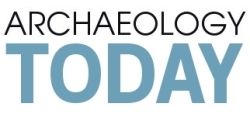
May 30th, 2013
It is considered the driest desert in the world. Without provision, a person would not last long in this hostile place, where after a few days without water one just might hallucinate, might see things that simply were not there. And it could be that a small group of people may be seeing things in this place that are not what they seem to be — lines and walls on a landscape, remains of structures that may or may not be man-made. The site, located in the Atacama desert, a 105,000 square kilometer (41,000 sq mi) plateau along the Pacific coast of Chile, has attracted the focused attention of only a few to date. Most professional news organizations and journals will not touch the story, presumably because there is not enough solid information and evidence about the site advanced by any professionally recognized archaeologists or scholars to justify the risk of publishing even an acknowledgement of its existence. (Popular Archaeology)
Ancient Egyptians accessorized with meteorites
Researchers at The Open University (OU) and The University of Manchester have found conclusive proof that Ancient Egyptians used meteorites to make symbolic accessories. The evidence comes from strings of iron beads which were excavated in 1911 at the Gerzeh cemetery, a burial site approximately 70km south of Cairo. Dating from 3350 to 3600BC, thousands of years before Egypt’s Iron Age, the bead analysed was originally assumed to be from a meteorite owing to its composition of nickel-rich iron. But this hypothesis was challenged in the 1980s when academics proposed that much of the early worldwide examples of iron use originally thought to be of meteorite-origin were actually early smelting attempts. (EurekAlert!)
Archaeologist treats guests to 1,000-year-old recipes
Prehistoric Museum archaeologist Tim Riley displays some of the Fremont cuisine he prepared. (SunAdvocate)
‘World’s oldest Torah’ scroll found in Italy
The University of Bologna in Italy has found what it says may be the oldest complete scroll of Judaism’s most important text, the Torah. The scroll was in the university library but had been mislabelled, a professor at the university says. It was previously thought the scroll was no more that a few hundred years old. However, after carbon dating tests, the university has said the text may have been written more than 850 years ago. (BBC News)
Ancient First Nations site damaged during BC Hydro work
Members of a Nanaimo First Nations group are outraged after crews contracted by BC Hydro damaged a documented ancient rock art site during work recently. Douglas White, chief of the Snuneymuxw First Nation said the damage is disrespectful of native heritage and he doesn’t understand how crews could make the mistake, since existing petroglyph rock art sites are documented and protected by legislation. (Journal of Commerce)





